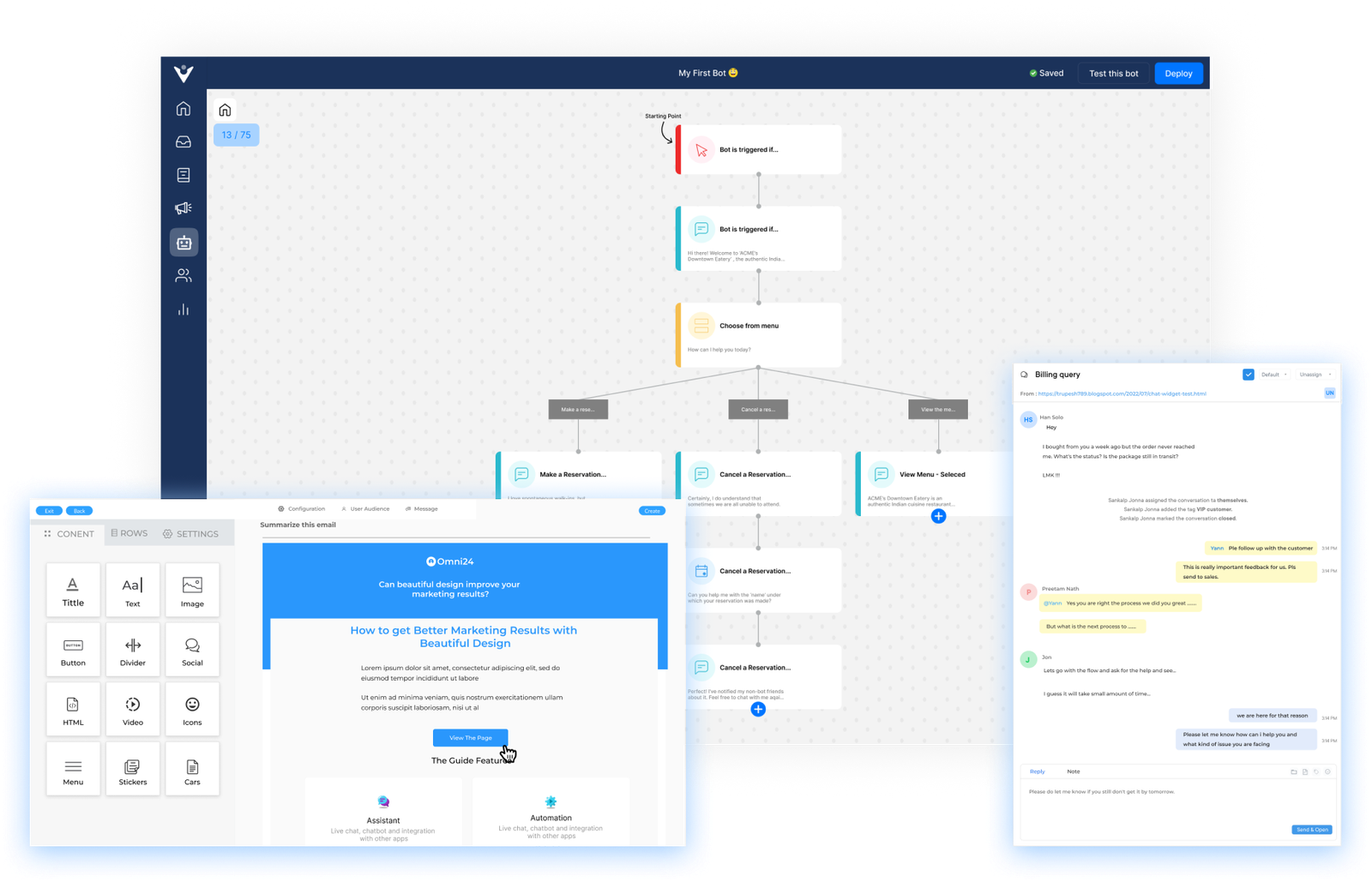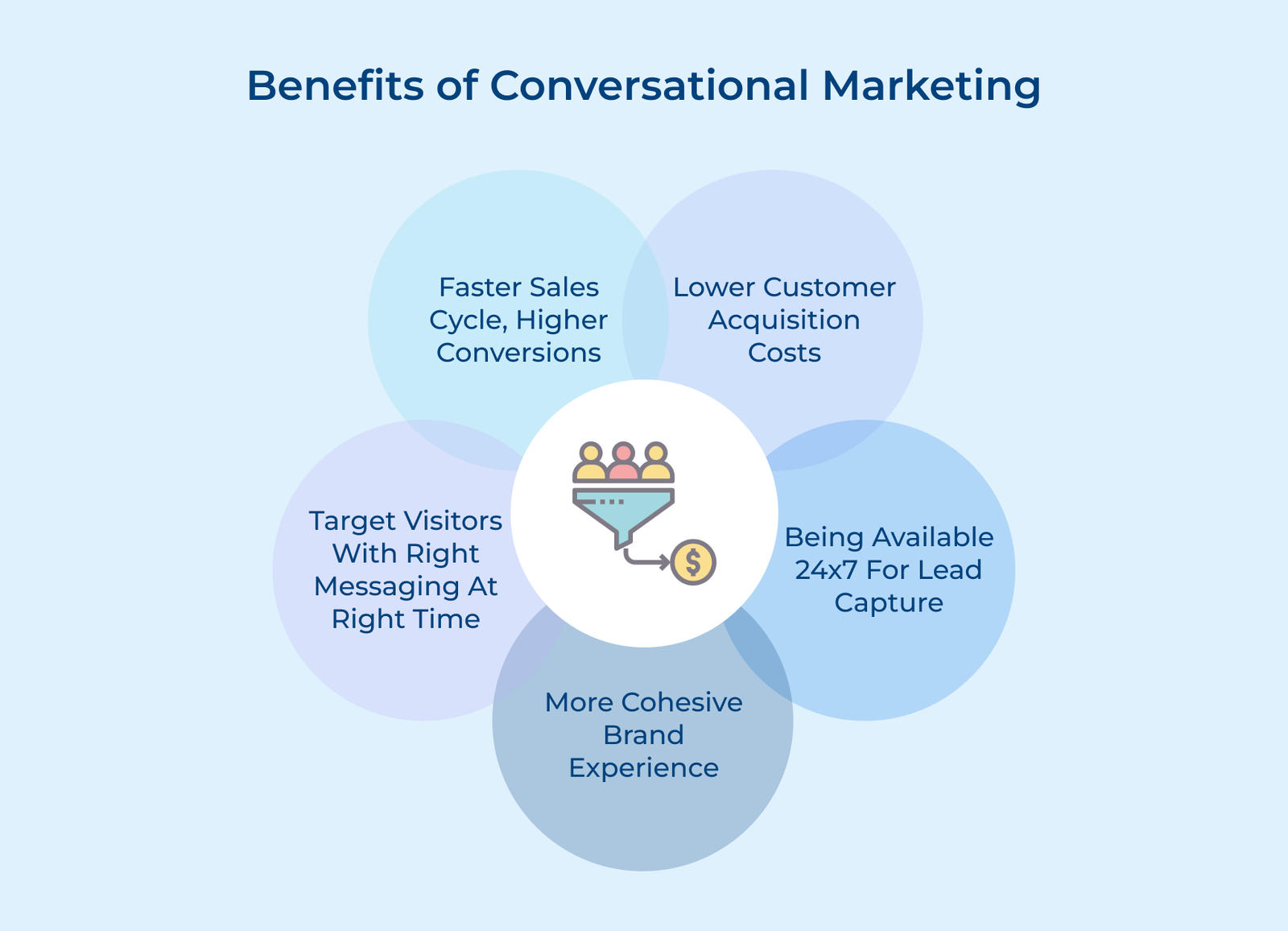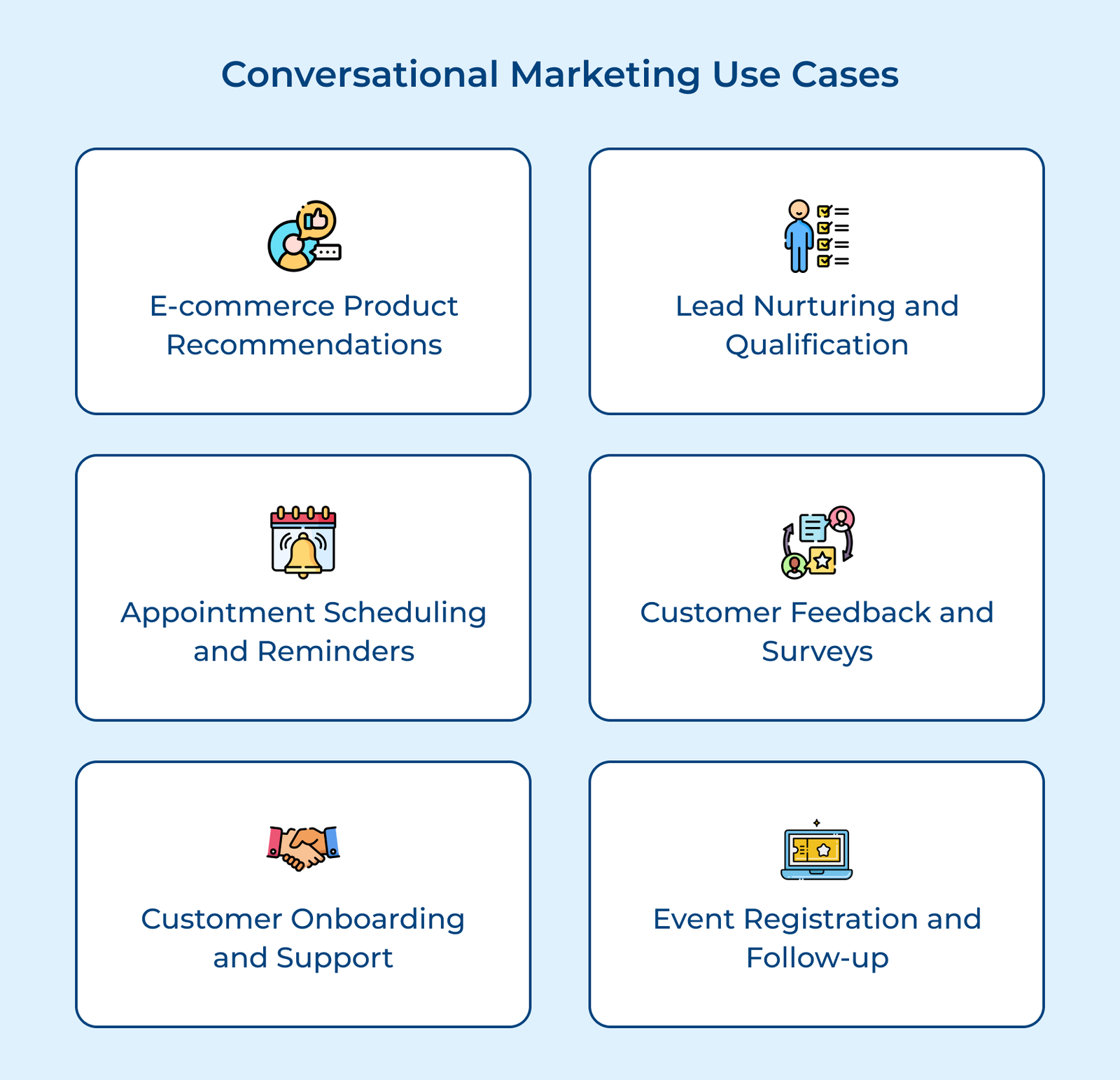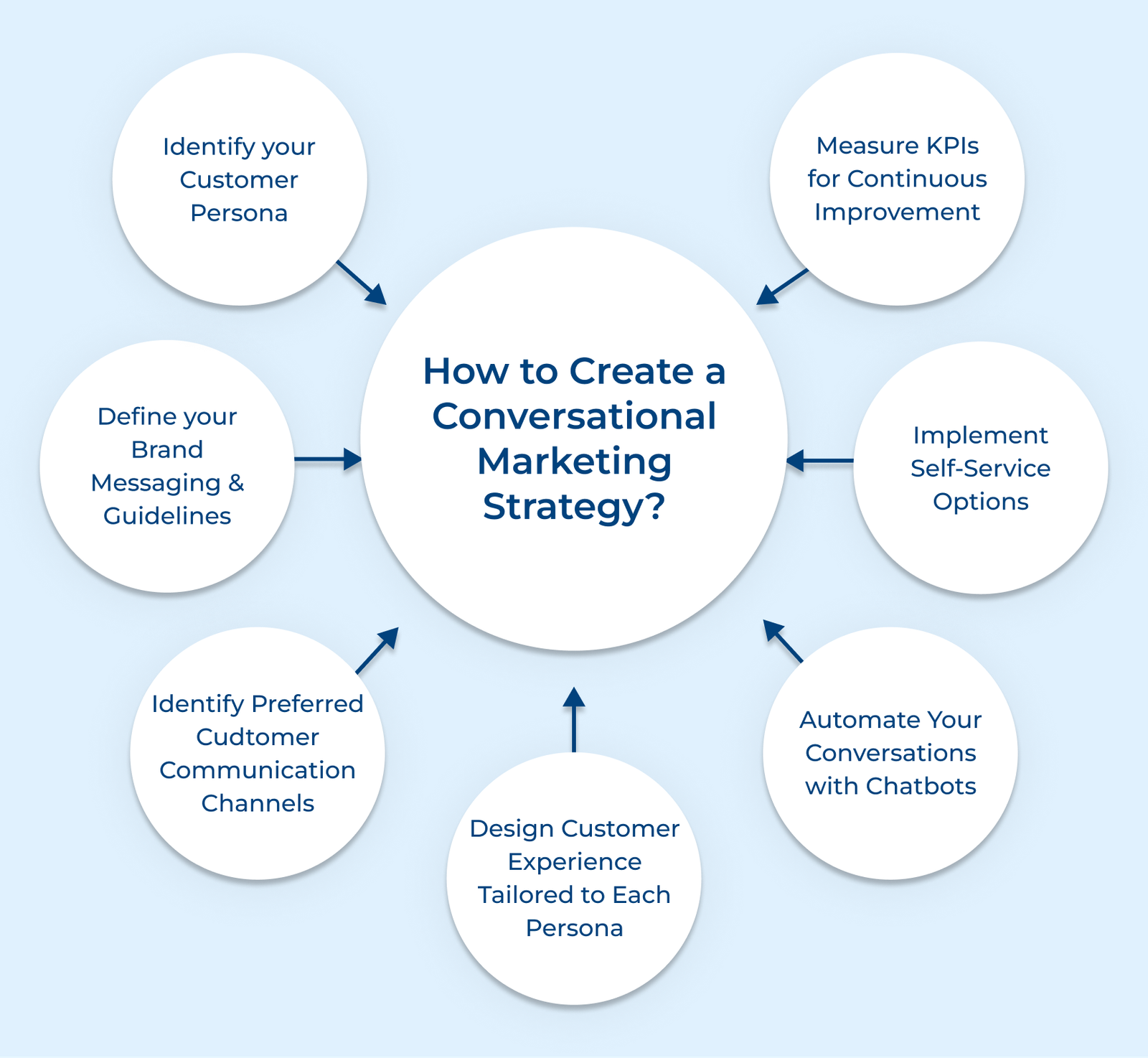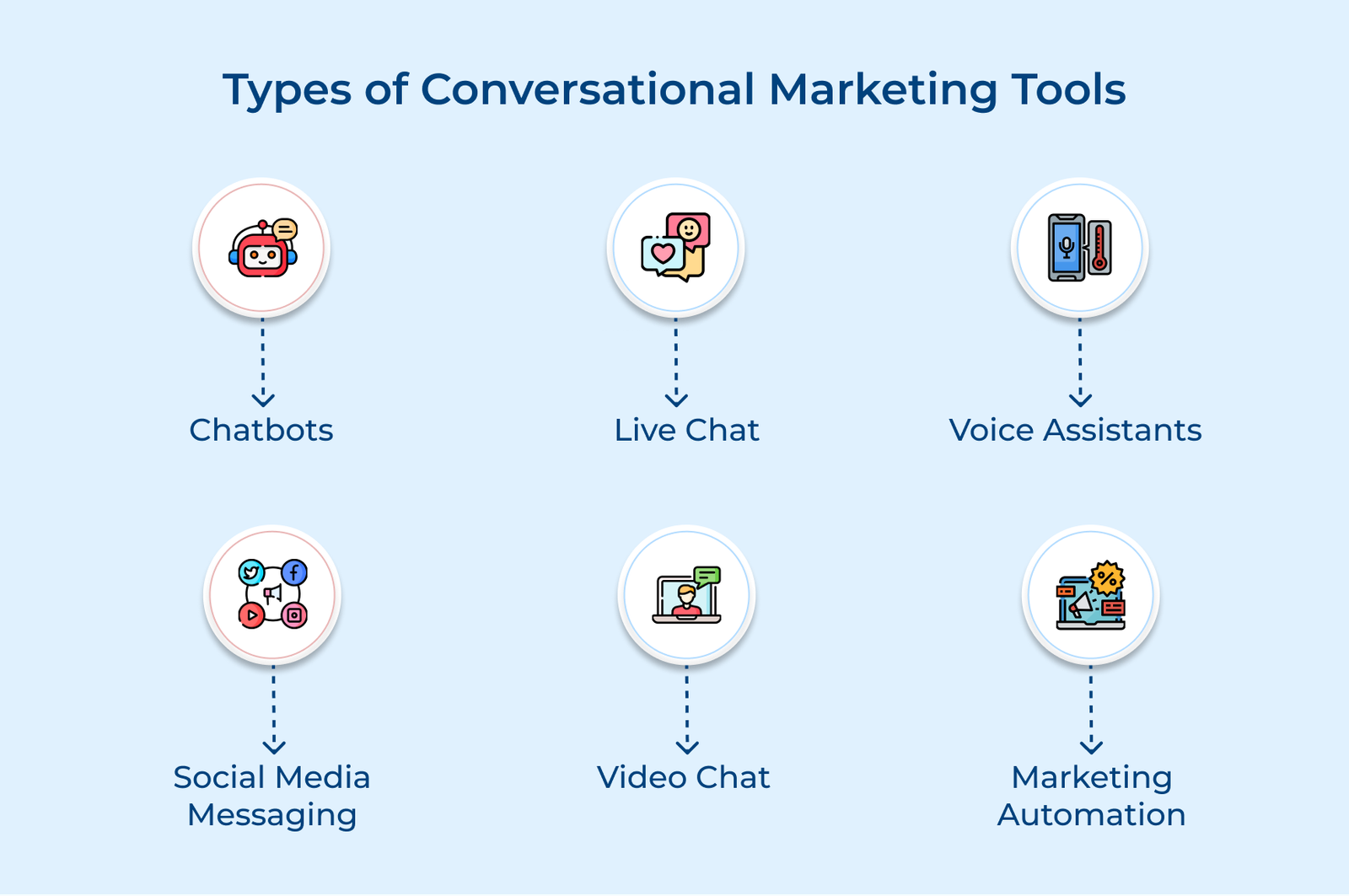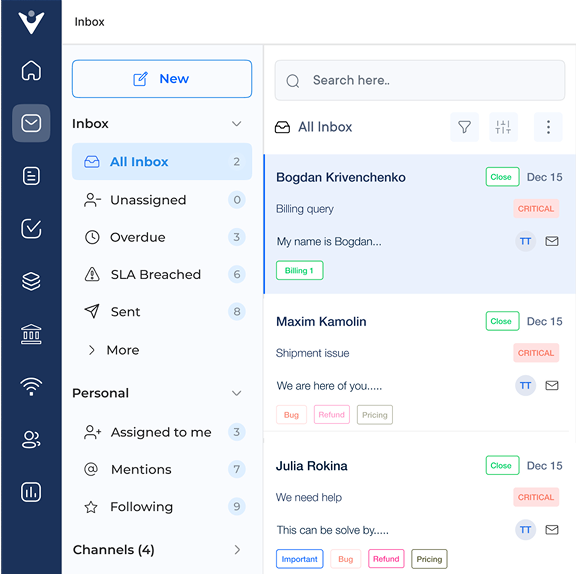#1 Identify your Customer Persona
Knowing your target audience is important to tailor your messaging and communication style while ultimately improving the chances of successful engagements. It helps in crafting relevant and compelling communication that speaks directly to your audience’s pain points.
Customer personas also lets you optimize your conversational marketing efforts across various channels. For example, if your target market consists of tech-savvy millennials, focusing on social media platforms like Instagram and TikTok could yield better results.
Best practices:
1. Conduct thorough research and gather data about your target audience to develop accurate as well as comprehensive customer personas.
2. Continuously update and refine your customer personas as market trends evolve.
3. Utilize analytics tools to track and measure the success of your conversational marketing efforts, enabling you to improve performance.
#2 Define your Brand Messaging and Guidelines
A consistent brand messaging play a vital role in conversational marketing to effectively convey your brand’s values, personality, and unique selling propositions. When your brand voice aligns with the target audience’s preferences, they are more likely to engage with your brand.
A clear set of brand values and messaging ensure that your chatbot or virtual assistant interacts with customers in a way that aligns with your brand’s persona. It can further enhance customer experience and provide a more personalized interaction.
Best practices:
1. Define your brand’s personality to determine the specific traits and characteristics that reflect your brand as well as align with your target audience.
2. Develop a brand messaging framework to create a concise set of messages that communicate your brand’s value proposition, benefits, and unique selling points.
3. Train your team to understand and effectively communicate your brand’s key messaging, whether in written form or in direct customer interactions.
#3 Identify Preferred Customer Communication Channels
Choosing right communication channels allows brands to meet their customers where they are most comfortable. It ensures that messages are delivered through the platforms they actively use, increasing the likelihood of customer engagement and response.
Knowing which channels your customers prefer such as email, social media or messaging apps, you can deliver hyper-personalized and timely messages to their preferred platforms. When you communicate with customers through their preferred channels, it shows that you value their preferences and are willing to meet them where they are most comfortable.
Best practices:
1. Segment your customer base based on their preferred communication channels so you can deliver targeted messages and offers to each segment.
2. Conducting surveys or using analytics tools to gather data on customer preferences and behavior. It allows you to make informed decisions on which channels to prioritize.
3. Constantly monitoring and adapting to changes in customer communication preferences as the latter can evolve over time, while new channels may emerge.
#4 Design Customer Experience Tailored to Each Persona
Personalization allows companies to deliver relevant and targeted content to different customer segments. For example, an e-commerce website can recommend products based on a customer’s past purchases or browsing history. It enhances the customer’s experience by providing them with options that align with their interests.
Tailored customer experiences can also help brands businesses to create more effective messaging and campaigns. It results in higher customer retention rates and positive word-of-mouth referrals which are invaluable for any business.
Best practices:
1. Conduct thorough analysis to understand the different customer personas and their specific needs.
2. Utilize technology such as AI-powered chatbots or personalized email marketing software to automate and personalize interactions with customers.
3. Continuously gather and analyze customer data to refine the customer experience based on evolving needs and preferences.
#5 Automate your conversations with chatbots
Chatbots are immensely versatile and can be utilized across various industries. One significant use case is customer support where chatbots provide instant responses to frequently asked questions, troubleshoot common issues, and escalate complex queries to human agents when necessary.
Another use case is lead generation and qualification. The chatbots engage with website visitors, collect their information, while qualifying them as potential leads before passing them on to sales teams. These bots also enhance e-commerce experiences by aiding in product recommendations, tracking orders, and facilitating seamless transactions.
Best practices:
1. Design your chatbot’s responses to be natural and human-like using language that matches your target audience. Avoid robotic or generic replies and strive for a conversational tone.
2. While chatbots excel in handling routine queries, there are instances when customers require human intervention. Ensure a smooth escalation process from chatbot to live agent.
3. Regularly analyze chatbot conversations to identify areas for improvement. Use this data to refine conversational flows, anticipate user needs, and enhance overall performance.
#6 Implement Self-Service Options
Implementing tools such as knowledge base, FAQ pages, knowledge bases, and chatbots empower customers to find answers to their questions without the need for human assistance. It not only saves time for customers but reduces the workload on your support team, allowing them to focus on more critical issues.
Self-service options can also provide helpful insights into customer preferences and behavior, enabling you to deliver targeted marketing campaigns.
Best practices:
1. Design intuitive and user-friendly interfaces that make it easy for customers to find the information they need. Ensure that the self-service options are accessible across different devices.
2. Regularly optimize your self-service options based on customer feedback and insights. Analyze user behavior and identify areas for improvement to continuously enhance the relevance.
3. Provide seamless integration with other customer touchpoints. Make sure that self-service options are connected with customer support channels like live chat or email, so customers have a choice to seek human assistance.
#7 Measure KPIs for Continuous Improvement
Quantify your conversational marketing techniques to learn what’s working and what needs improvement. The data-driven approach enables businesses to make informed decisions and optimize their strategies for better outcomes.
Brands can determine whether their chatbots, live chat, or social media interactions are resonating with customers and adjust their approach accordingly. Measuring KPIs aids to link the overall impact of their conversational marketing efforts on key business goals, enabling companies to tailor their messaging and offerings to better meet their needs.
Best practices:
1. Clearly define and align key performance indicators (KPIs) with your business objectives. This could include metrics such as conversion rates, response times, customer satisfaction ratings, etc.
2. Regularly monitor the data collected. Set up tools to track relevant metrics continuously. Closely monitor trends to identify areas of improvement and make data-driven decisions.
3. Use A/B testing and experimentation to determine what strategies work best. By testing different variations within the conversational marketing campaigns, you can optimize your tactics.




